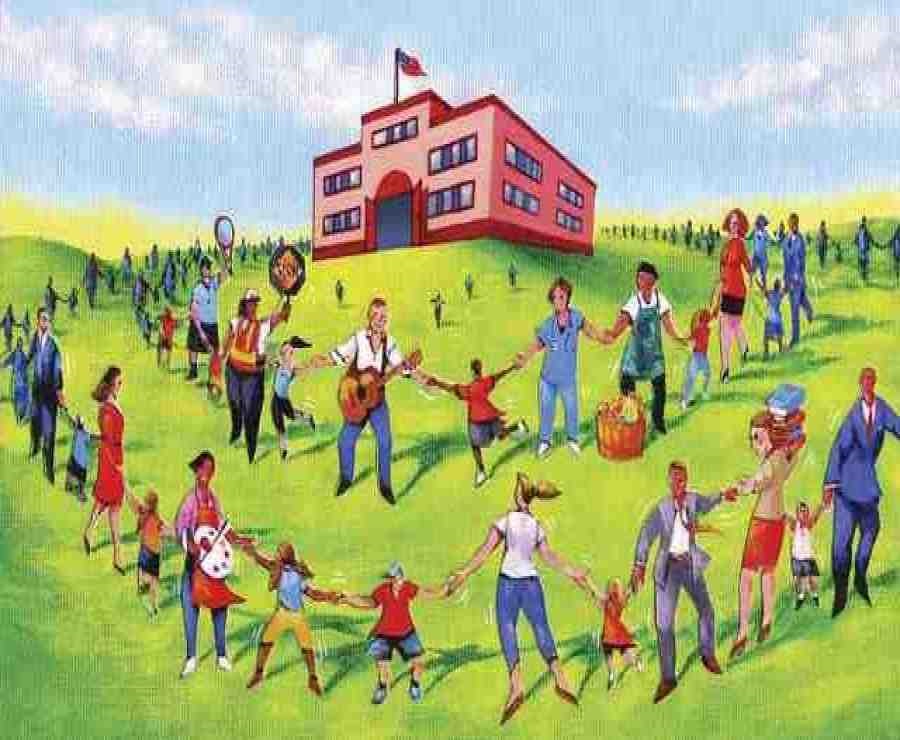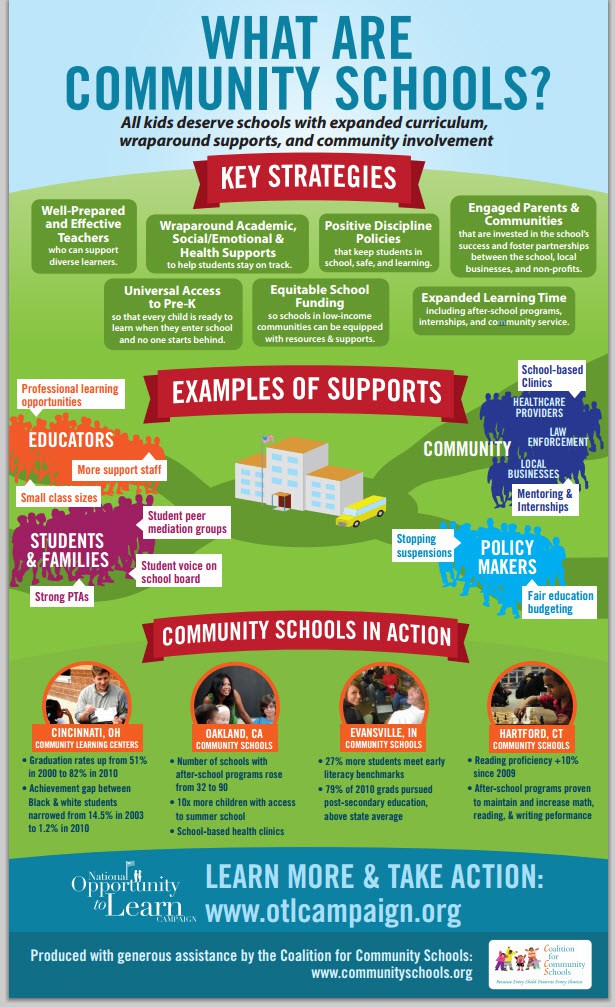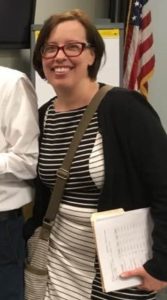
At the same time, our students’ academic, emotional, and physical needs are greater than ever due to the challenges of remote learning and remote delivery of services that were previously received at school. Our students are dealing with increased stress, trauma, and grief due to the pandemic. And because our communities have a disparate level of access to technology, some of our students are struggling more and receiving less support than their peers elsewhere in the state.
Our schools will need to leverage all resources that are available to them — from within their district, from local, state, and federal government, and from community partners — to meet the needs of our students and effectively do more with less.
There is already a proven model for doing this: Community Learning Centers. The Community Learning Center model is built on the principle that public schools are natural neighborhood hubs of educational, cultural, and health resources. Each Community Learning Center is both a place, and a set of partnerships and relationships that provide resources and services based on the assets and needs of each school community. 
We don’t have to travel far to find a great example of this model. Cincinnati Public Schools have been better prepared to deal with the COVID-19 public health emergency and school closures because of the Community Learning Center model within their school district.
Through school-based health centers and tele-health services, online early childhood instruction, food pantries filled with donations from community and business partnerships, free Wi-Fi hot spots, legal aid, and more, the Community Learning Center model has given CPS students and families the resources they need to get through this crisis together.
Roberts Academy, a pre-K through 8th grade school in Cincinnati, educates more than 800 students, the majority of whom are immigrants or refugees. Their school building may be closed but the Community Learning Center team is working seven days a week. Tracy Power, a Resource Coordinator with the Community Learning Center Institute (CLCI), organizes Roberts’ many public and non-profit partnerships that make up their community learning center. Power leads a team of partners, volunteers, and teachers that has called each of the school’s families to check in, identify needs, and connect kids and families with services and programming.
At Roberts’ school-based health center, which serves the community in addition to the school, Nicole DeGreg from the Cincinnati Health Department is providing medical care on-site and offering tele-medicine services. Early childhood learning continues remotely, led by Maria Rivera from Learning Grove, a non-profit partner, as does enrichment, led by Kerissa Hicks from CLCI. Attorney Julie Leftwich, who heads the Immigrant and Refugee Law Center at Roberts, is still providing services to the school’s families. Welcome Center director Antonio Fernandez from CLCI works closely with Carlos Guzman, community coordinator with CPS, to stay engaged with families, identify needs, and connect people with needed services.
Despite working for different organizations, this group meets weekly and operates as one team, united by the Community Learning Center model.
Though they don’t all provide the same services, Roberts is just one of dozens of community learning centers in Cincinnati, and their health center is just one of 25 school-based health centers throughout the city. Even as school buildings have closed, some school-based health centers have remained open, moving many services to tele-health.
Community Learning Centers are not for crises only. They are how we should structure education even in the best of times. This model deals with the everyday, real life that is in our schools. Because Cincinnati already has the structure and relationships in place, they were able to quickly respond in an emergency situation.
The Ohio Federation of Teachers has been supporting the growth of the Community Learning Center model across Ohio, because we know that a long-term commitment to community learning centers boosts student achievement, closes racial and economic achievement gaps, and leads to better attendance and disciplinary outcomes. In partnership with the Ohio School Boards Association and the Buckeye Association of School Administrators, we are building a statewide learning network of school districts and communities across the state exploring and implementing the CLC model.
School districts need to be able to make the investment in the Community Learning Center model to be able to form these partnerships and provide benefits to students and their families.
A starting point for expanding community learning centers would be to provide funding for a community engagement process in every district, and resource coordinators at every school, who would build and maintain partnerships with local businesses and nonprofits.
Harnessing those resources can help our schools and our communities weather this storm. And maintaining those partnerships, even when not in crisis, will help students overcome barriers to learning.
Now more than ever, we need to break down the walls between organizations and sectors, and work collaboratively to take care of one another and solve problems together. The pandemic has brought people together, and collaboration and cooperation in this moment can build the foundation for the CLC model in the future.
This article by Melissa Cropper, President of the Ohio Federation of Teachers (OFT), was first published by the Ohio Capital Journal, an independent, nonprofit news organization dedicated to connecting Ohioans to their state government and its impact on their lives.
Community learning centers will help school districts cope with COVID-19 disruption

